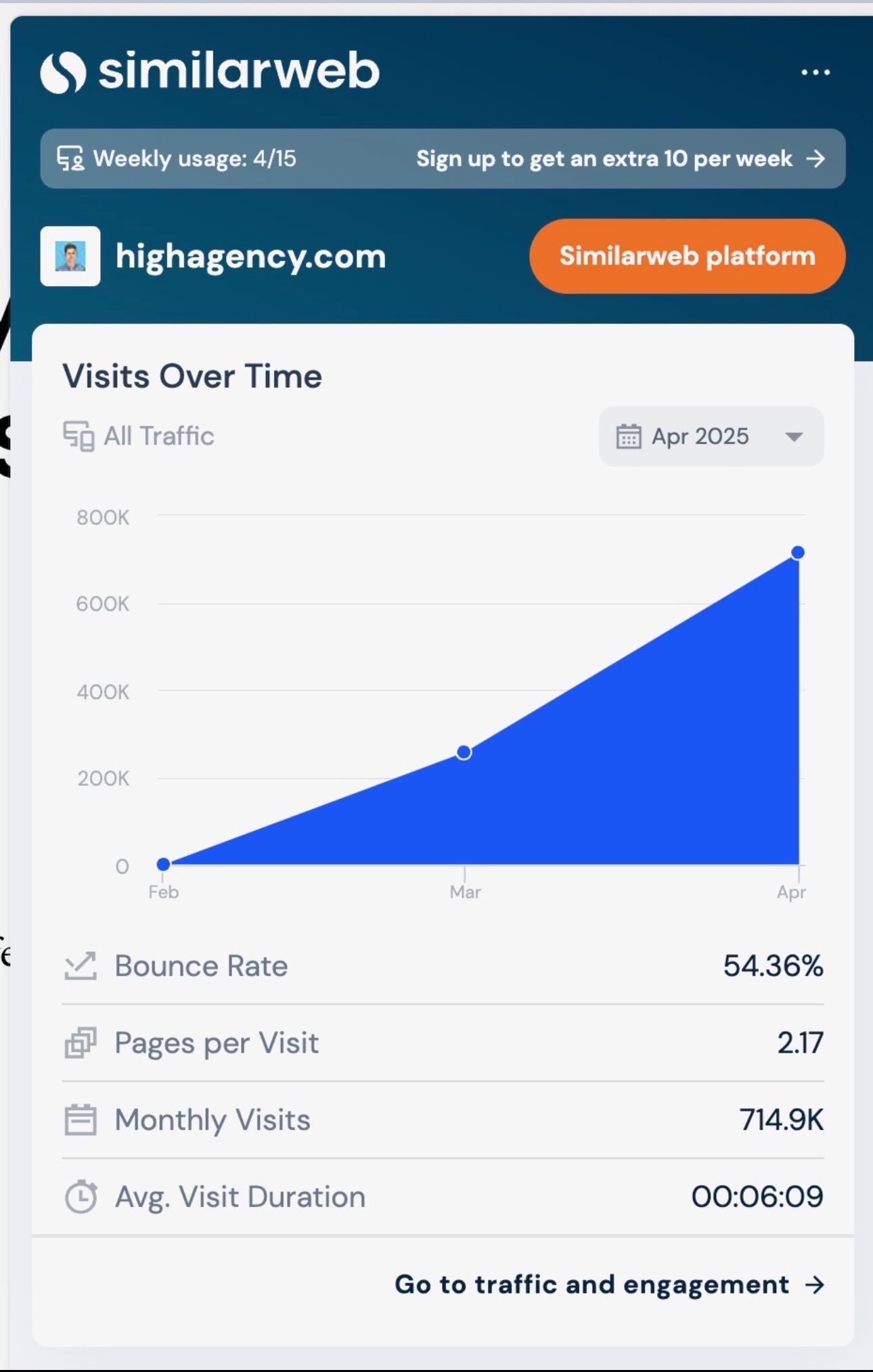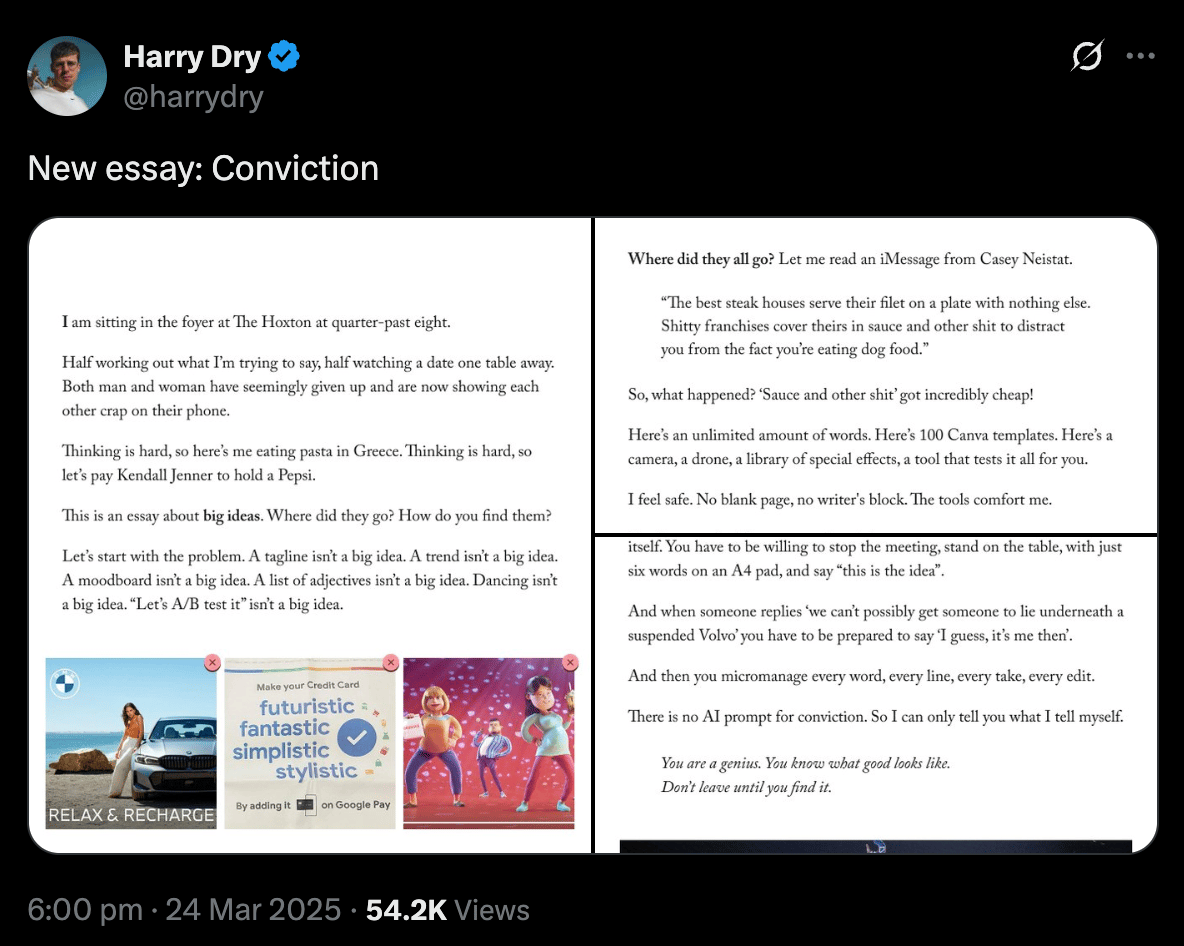- Growing Viral
- Posts
- HOW TO BE STICKY: A SKILL I WANT TO MASTER
HOW TO BE STICKY: A SKILL I WANT TO MASTER
The Reason Some People Linger in Your Mind and Others Don’t
Morning!
I’m sitting in the coworking space of my building at six in the evening.
45 minutes ago, I was fast asleep on the couch taking my first nap in probably 3 years. Now I sit with a raspberry Lucozade Sport by my side (a desperate attempt to convince my body it’s go-time) and a blank page on my laptop.
Before my nap, I had sat down on the couch and scrolled through some marketers’ social pages for inspiration for this newsletter. 30 minutes later… I woke up. Clearly they weren’t sharing many interesting ideas.
But I woke up with a question stuck in mind: why are so many companies and people easily forgotten, yet others are sticky?
They stick in your mind. You keep going back to them. You keep thinking about them. You talk about them with your friends, your colleagues.
What is that stickiness? How do you achieve it?
I’m giving myself 1500 words to articulate it, explain it, and show some examples of how to be sticky (in the marketing sense).
Let me know what you think!
BREAKING DOWN THE STRATEGY
Let's start with what stickiness isn't.

This isn’t sticky.

This isn’t sticky.

A reshared viral ad
This isn’t sticky.
A viral post doesn't make you sticky. A revenue number doesn't make you sticky. Lots of followers doesn't make you sticky.
These are things you share when you don't have stickiness.
Stickiness is when you write an essay that gets 714k views per month.

Stickiness is when you post your first YouTube video and 55,000 people flood to see it.

Stickiness is launching a product in one of the most saturated markets and building a cult following anyway.

But if all of these people and brands have been able to become so sticky…
Why is it so bloody hard to achieve?
Mainly because most people are trying to please everyone, and when you try to appeal to everyone, you inherently impact each individual less. You're choosing width over depth. You choose to be seen over being sticky.
Harry Dry is a prime example of the complete opposite of this.

He recently wrote this essay on "Conviction" that I’ve read more times than I can count. Ironically, the essay only got 54,000 views (extremely low for him).
With his ability, he could have written an essay on “Hook writing” that got 6 million views. Hook writing is what everyone wants to learn. If he were chasing numbers and trying to please, that would have been an easy, safe bet.
Instead, he wrote an essay on something that he was passionate about and thinking about deeply. Because of that, the 54,000 who read "Conviction" were impacted deeply because it resonated with them on a different level. It wasn't optimised for maximum reach - it was optimised for maximum impact on the right people.
And that essay stuck. I quote it in meetings. I sent it to colleagues. I think about it when making decisions.
That's the difference between viral and sticky. Viral spreads fast, but sticky embeds deep and stays.
So how can you become sticky?
First, you need to know who you are. And stick to it.
I know this because I've been living the opposite with this newsletter.
I've put more time into this newsletter than any other content project I've worked on. I've written a new newsletter every week for 211 consecutive weeks. Every. Single. Week. For over four years.
Yet I only have 4,200 subscribers.
The reason? What this newsletter is always changes. Over those 211 weeks, this newsletter has been:
Marketing strategy breakdowns of brands
Profiles of history's great marketers
Marketing ideas I've been thinking about
Marketing essays on singular ideas (like this one)
This newsletter can't become truly sticky when I change it this much. Because my audience never knows what they're going to get. They can't file me away in their mental cabinet under a clear category.
Now take The Cultural Tutor (a writer on Twitter) as a case for the complete opposite. The Cultural Tutor started his newsletter years after I started mine. He’s only published 98 articles so far. Yet every article has been the exact same thing. He breaks down history and culture in his own distinct way. The same format, the same voice, the same delivery every time.
That newsletter now has 76,000 subscribers. 98 articles versus my 211. Yet he has 18x more subscribers.
That is stickiness.
Second, you need an interesting fact.
Stickiness at its core is simply being remembered. But to be remembered, you need something interesting to lodge in people's brains.
Your brain is like a filing cabinet. It needs a clear label to know where to store information about you. Without that label, the information gets lost in the general pile of "marketing people" or "businesses I've heard of."
Take Grace Andrews as a prime example of this in action. Grace is blowing up right now. She's speaking on stage three to four times per week and she's on all the podcasts. She's fantastic. But it's not like she's cranking out loads of content or the best marketer to walk planet earth.
(Don’t get me wrong, I think she’s an amazing marketer and does offer a tonne of value.)
But the biggest advantage Grace has is the fact that she has an extremely interesting fact: "She was the director of marketing at Flight Story and worked with Steven Bartlett."
That's a fact your brain can store in its file cabinet. It gives you a reason to pay attention, a context to understand her insights, a story to tell when you recommend her to someone else.
Example: “Have you seen that Grace Andrews? She was the Marketing Director for Steven Bartlett”.
Without that interesting fact, she's just another marketing consultant with good advice. With it, she's the person who worked with Steven Bartlett and knows how to scale companies.
Most people don't have an interesting fact. They're just "good at marketing" or "run a successful agency." And it’s in those vague phases where things stop becoming sticky.
But most of all, of all the things I’ve mentioned here, is that you need to be distinct.
George Mack's "High Agency" essay gets 700k reads every month because he packaged an idea in a unique way that no one else has ever done. It's a new term people didn't use. Written in a way only he writes. Every aspect of it is distinct.
He didn't write about "taking initiative" or "being proactive" - concepts everyone knows. He created a new framework, gave it a name, and explained it through his lens.
SULT succeeded in entering the electrolyte category (majorly oversaturated and competitive) because they came with a distinct view of who they were, how they wanted to market themselves, and how they'd come across. They didn't try to out-Gatorade Gatorade or copy Logan Paul’s PRIME. They carved out their own space with their own personality.
Joe Rogan built the largest podcast in the world because while everyone else tried to copy what was working in traditional media, he was simply bringing on guests he thought were interesting and having casual chats with them while asking questions he was genuinely curious about.
Three-hour conversations. No time limits. No script. No agenda beyond curiosity. Everyone said it wouldn't work. Too long, too unstructured, too authentic. They were wrong.
That’s stickiness.
People float around the word "authenticity" a lot nowadays. Mainly because it sounds clever to say. But I find it almost impossible to articulate and offer tough to embody.
But one of the reasons being your authentic self works is simple: the easiest way to be distinct is to just be yourself.
Nobody else can be you. Your combination of experiences, perspectives, and voice is unique by default. But most people sand away their edges to fit in, to avoid offence, to appeal to more people.
The edges are what make you sticky.
Distinctness is stickiness. And stickiness wins.
Right. That’s all I’ve got. The Lucozade is empty, and it’s time I went to bed.
Until next Sunday.
— Niall
WAIT… BEFORE YOU GO
Rate this weeks breakdown |
BROUGHT TO YOU BY
The best marketing ideas come from marketers who live it. That’s what The Marketing Millennials delivers: real insights, fresh takes, and no fluff. Written by Daniel Murray, a marketer who knows what works, this newsletter cuts through the noise so you can stop guessing and start winning. Subscribe and level up your marketing game.

